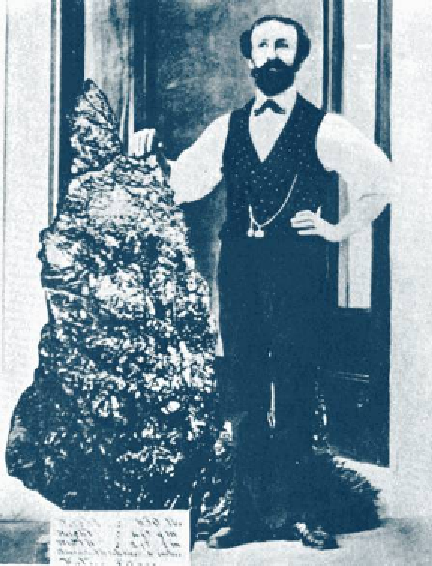Environmental Engineering Reference
In-Depth Information
Light Metals
Four metals that are exceptionally light but strong for their weight, have become highly
important for structural use since the beginning of the industrial revolution. Aluminium,
the oldest and best-known of the light metals, is the most common metal in the Earth's
crust. It can only be produced commercially from bauxite deposits, the result of later-
itic weathering of granitic rocks. Bauxite mining requires large-scale operations, and the
processing facilities which produce alumina are expensive (see Chapter Six for a brief
discussion of the Bayer process, the common method of extracting alumina from ore).
Smelting of alumina to produce aluminium metal is energy intensive. Aluminium metal
is used extensively for the manufacture of aircraft and motor vehicles. Magnesium is the
lightest metal known. It is being used increasingly in new alloys for motor vehicles where
lighter weight means increased fuel efi ciency. Compounds of magnesium are used in
agriculture and in water treatment. It is produced from sea water and also from hard rock
deposits of magnesite (Magnesium carbonate). Beryllium is a newcomer in the world of
light metals, used to some extent in the nuclear power industry and as an alloy ingredi-
ent. Titanium, the fourth light weight metal, is produced mainly from ilmenite and rutile,
two heavy minerals found in mineral sand deposits, in which heavy mineral grains have
been concentrated by the winnowing action of waves, currents or winds. Commercial pro-
duction of these titanium minerals occurs in Australia, Mozambique, Eastern USA, and,
in the future, India. Most titanium is used as a pigment in paints. However, increasingly
titanium metal is being used in applications where a very strong but light weight metal is
required; golf clubs and tennis racquets are two examples, rockets are another.
Aluminium, the oldest and best
known of the light metals, is
the most common metal in the
Earth's crust.
Radioactive Metals
For radioactive metals, their metallic nature is generally irrelevant. Uranium is used as
nuclear fuel to produce energy and its use is further discussed in Chapter Eleven. Thorium,
For radioactive metals, their
metallic nature is generally
irrelevant.
CASE 5.1
'It's not how much ground you search,
but how well you search the ground. '
Electronic prospecting (better known as metal
detecting) for gold is a relatively new devel-
opment in gold prospecting. Improvements in
this technology mean that metal objects can
be detected at depths up to 1 m and more,
depending on their size. It was the advent
of these electronic devices that started the
detector gold rush in Australia. As the name
implies, a metal detector will locate all types
of metal whether in native form like gold
nuggets or man-made metallic objects such
as coins, cans, nails or bolts. Most gold nug-
get hunters work the old gold-rush grounds
hoping to strike it lucky.
Is there a prospect of a 21st century
gold rush based on this type of prospecting?
Probably not. Gold nuggets account for very
little of the world's gold production. Today
the real money in gold belongs to serious
miners, guided by serious geologists. The
gold ore being mined today shows no sign
of its valuable fraction, yielding a few grams
in every ton of rock.
However, gold has a call unique to itself,
a call that only a few can resist. Nuggets
can still be found - the luck is in how big
they are. There is always the hope to strike
it as lucky as German prospector Bernard
Otto Holtermann in 1872 who found a
630 lb mass of almost solid gold at Hill
End, New South Wales, Australia.









Search WWH ::

Custom Search